Do you have a question about the Troy-Bilt 030247-1 and is the answer not in the manual?
Provides an overview of the generator's design, purpose, and key safety symbols.
Introduces generator components and their functions with an illustration.
Steps for safely removing the generator from its shipping carton.
List of items included in the generator's shipping carton for verification.
Instructions and steps for attaching the generator's wheel kit for portability.
Information and steps for setting up the electric start capability and connecting the battery.
Crucial steps for adding the correct type and amount of engine oil before operation.
Instructions for adding the correct type of fuel and tank filling precautions.
Guidance on appropriate fuel types and considerations for high-altitude operation.
Explains generator ground, safety regulations, and utility company notifications.
Guidelines for safely connecting the generator to a building's electrical system.
Recommendations for safe placement and clearance of the generator to prevent hazards.
Step-by-step instructions for starting the generator's engine using electric or manual start.
Procedures for safely shutting down the generator engine after use.
Details about the included 25' adapter cord set for connecting loads.
Describes the 120/240V, 30A locking receptacle and its usage.
Explains the 120V, 20A duplex receptacles and their protection.
Information on using the battery float charger jack for starting battery maintenance.
Guidance on creating shelters to protect the generator from cold weather and icing.
Explains generator capacity, item wattage estimation, and power management.
Details about the engine's type, emissions standards, and California certification.
Lists the generator's electrical output, phase, frequency, fuel capacity, and shipping weight.
Advice on maintaining generator performance and warranty compliance.
Procedures for cleaning the generator's exterior and maintaining the starting battery.
Covers engine oil, air cleaner, spark plug, and oil change procedures.
Maintenance for spark arrester, cooling system, valve clearance, and carburetor.
Essential steps to prepare the generator for storage exceeding 30 days.
Preventing fuel system damage and gumming during storage.
Procedures for changing oil and lubricating the cylinder bore for storage.
Final checks and tips for storing the generator safely and effectively.
Diagnosing and fixing issues when the engine runs but produces no power.
Troubleshooting why the engine performance drops when loads are connected.
Identifying and resolving starting and rough running engine problems.
Diagnosing reasons for unexpected engine stopping or lack of power.
Addressing issues where the engine speed fluctuates or sputters.
Explains the emissions control system warranty and its scope for small engines.
Details owner duties, warranty coverage, and specific provisions for defects.
Information on engine emissions compliance periods, durability, and air index labels.
Defines the express and implied warranties, including limitations on duration and damages.
Specifies the duration of warranty coverage for consumer and commercial use.
Explains what the warranty covers and common exclusions like normal wear and tear.
Provides an overview of the generator's design, purpose, and key safety symbols.
Introduces generator components and their functions with an illustration.
Steps for safely removing the generator from its shipping carton.
List of items included in the generator's shipping carton for verification.
Instructions and steps for attaching the generator's wheel kit for portability.
Information and steps for setting up the electric start capability and connecting the battery.
Crucial steps for adding the correct type and amount of engine oil before operation.
Instructions for adding the correct type of fuel and tank filling precautions.
Guidance on appropriate fuel types and considerations for high-altitude operation.
Explains generator ground, safety regulations, and utility company notifications.
Guidelines for safely connecting the generator to a building's electrical system.
Recommendations for safe placement and clearance of the generator to prevent hazards.
Step-by-step instructions for starting the generator's engine using electric or manual start.
Procedures for safely shutting down the generator engine after use.
Details about the included 25' adapter cord set for connecting loads.
Describes the 120/240V, 30A locking receptacle and its usage.
Explains the 120V, 20A duplex receptacles and their protection.
Information on using the battery float charger jack for starting battery maintenance.
Guidance on creating shelters to protect the generator from cold weather and icing.
Explains generator capacity, item wattage estimation, and power management.
Details about the engine's type, emissions standards, and California certification.
Lists the generator's electrical output, phase, frequency, fuel capacity, and shipping weight.
Advice on maintaining generator performance and warranty compliance.
Procedures for cleaning the generator's exterior and maintaining the starting battery.
Covers engine oil, air cleaner, spark plug, and oil change procedures.
Maintenance for spark arrester, cooling system, valve clearance, and carburetor.
Essential steps to prepare the generator for storage exceeding 30 days.
Preventing fuel system damage and gumming during storage.
Procedures for changing oil and lubricating the cylinder bore for storage.
Final checks and tips for storing the generator safely and effectively.
Diagnosing and fixing issues when the engine runs but produces no power.
Troubleshooting why the engine performance drops when loads are connected.
Identifying and resolving starting and rough running engine problems.
Diagnosing reasons for unexpected engine stopping or lack of power.
Addressing issues where the engine speed fluctuates or sputters.
Explains the emissions control system warranty and its scope for small engines.
Details owner duties, warranty coverage, and specific provisions for defects.
Information on engine emissions compliance periods, durability, and air index labels.
Defines the express and implied warranties, including limitations on duration and damages.
Specifies the duration of warranty coverage for consumer and commercial use.
Explains what the warranty covers and common exclusions like normal wear and tear.
| Starting System | Recoil |
|---|---|
| Weight | 110 lbs |
| Engine Type | OHV |
| Noise Level | 68 dB |
| AC Output | 120V |
| DC Output | 12V |
| Outlet Types | 1x 12V DC |
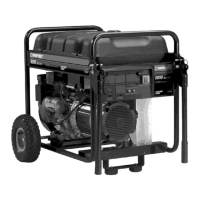
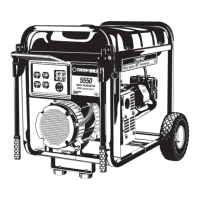
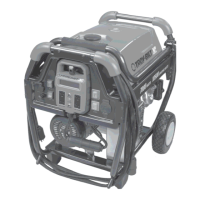
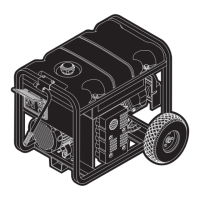
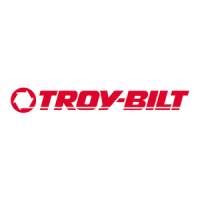
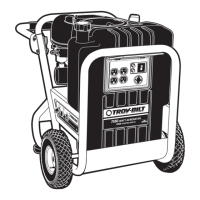


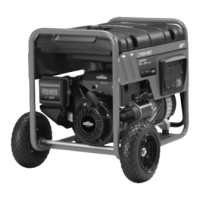
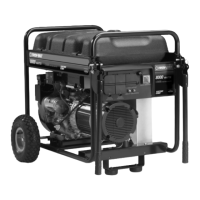
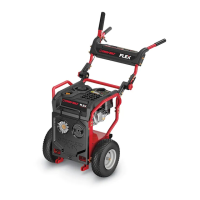

